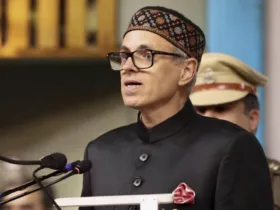Renowned entrepreneur and Infosys co-founder N.R. Narayana Murthy recently issued a stark warning about the potential consequences of climate change on urban migration in India. Speaking at a public forum, Murthy expressed concern that cities like Bengaluru and Pune might face an overwhelming influx of migrants in the coming decades as climate change disrupts livelihoods and living conditions in other parts of the country.
Perspective of Narayana Murthy on Climate-Induced Migration
Murthy highlighted the potential of climate change to render vast swathes of rural and semi-urban areas uninhabitable due to extreme weather events, rising temperatures, and dwindling water resources. In such scenarios, people from affected regions could flock to urban centers like Bengaluru and Pune, known for their economic opportunities and relatively stable climatic conditions.
This migration, Murthy warned, could strain the already overburdened infrastructure of these cities. With rising populations, challenges such as traffic congestion, housing shortages, and pressure on water and power supplies could escalate dramatically, leading to a significant decline in the quality of life for residents.
The Role of Indian Cities in Climate Adaptation
Bengaluru and Pune are already among India’s most sought-after cities due to their booming IT sectors, education hubs, and modern infrastructure. However, this popularity comes at a cost. Murthy emphasized that these cities need to take proactive measures to prepare for the potential influx of climate migrants by developing sustainable infrastructure and investing in green technologies.
Key steps suggested include:
- Expanding affordable housing and reducing urban sprawl.
- Enhancing public transportation systems to reduce traffic congestion.
- Ensuring water conservation and implementing renewable energy solutions.
- Developing heat-resilient urban spaces to combat rising temperatures.
Broader Implications of Climate Change
Remarks of Narayana Murthy tie into a growing global concern over climate-induced migration. According to international studies, millions of people worldwide are at risk of being displaced due to environmental factors like floods, droughts, and rising sea levels. In India, the effects are particularly acute in regions like coastal areas and drought-prone interiors.
This has raised questions about how cities can absorb such large-scale migration without compromising their sustainability. For instance:
- Can current urban planning strategies handle future migration trends?
- Are cities investing enough in climate-resilient infrastructure?
- How can governments balance economic development with environmental preservation?
Expert Opinions on Concerns of Narayana Murthy
While some experts agree with Murthy’s predictions, others argue that migration trends are influenced by multiple factors, including economic opportunities and government policies. They point out that climate migration is often a slow and complex process, giving cities time to adapt if proper planning and investment are prioritized.
Critics, however, caution against alarmism, suggesting that such warnings should be backed by actionable plans to address the potential challenges.
Government’s Role in Climate Mitigation
The Indian government has taken steps to address climate change through initiatives like the National Action Plan on Climate Change (NAPCC) and urban renewal programs like the Smart Cities Mission. However, Murthy’s remarks indicate that much more needs to be done, particularly in terms of localized climate action and integrating climate resilience into urban planning.
Central and state governments will need to collaborate with city administrations to:
- Prioritize climate resilience in urban development plans.
- Foster public-private partnerships to finance green projects.
- Encourage innovation in waste management, energy efficiency, and sustainable transportation.
Call for Citizen Awareness
Murthy also called upon citizens to adopt environmentally conscious lifestyles to mitigate climate change. Simple actions like reducing energy consumption, adopting public transportation, and minimizing waste can collectively contribute to slowing down climate change.
The Road Ahead
Murthy’s warning serves as a wake-up call for policymakers, urban planners, and citizens alike. Cities like Bengaluru and Pune, which have historically been magnets for talent and opportunity, must now prepare for the potential challenges posed by climate migration. By embracing sustainable development and proactive planning, these cities can turn this challenge into an opportunity to lead India’s fight against climate change.
The future of Indian cities will depend on how effectively they balance growth with sustainability, ensuring that they remain livable and resilient in the face of an uncertain climate future.










